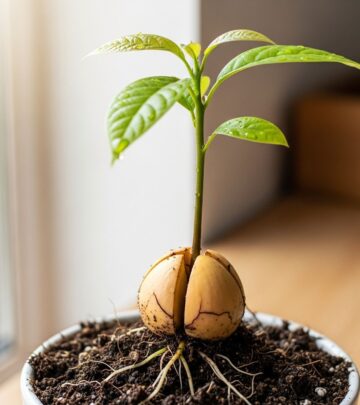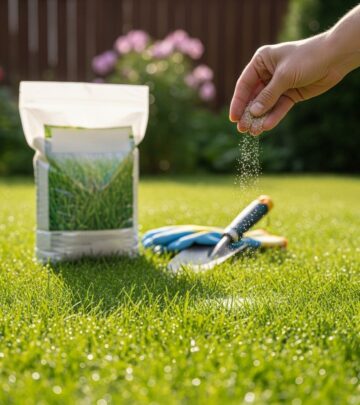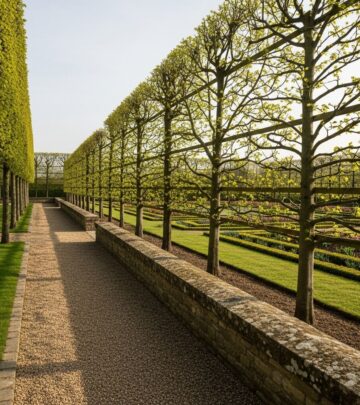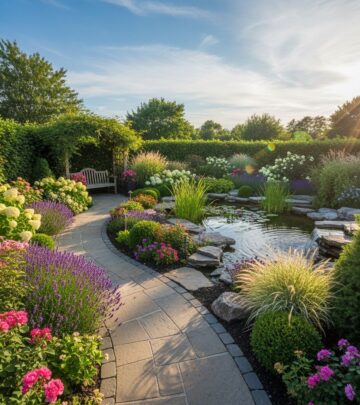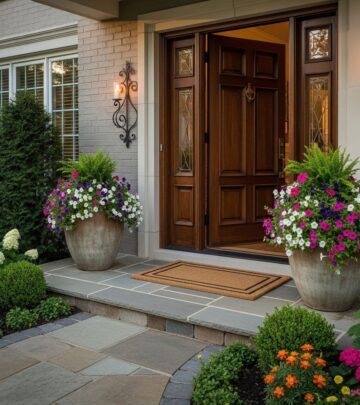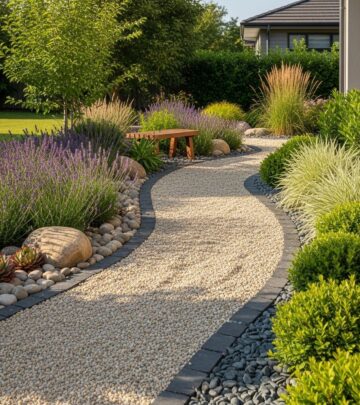Hardscape Design Ideas: Comprehensive Guide For Your Dream Yard
Transform your outdoor living area with expert hardscape design tips for patios, paths, and more
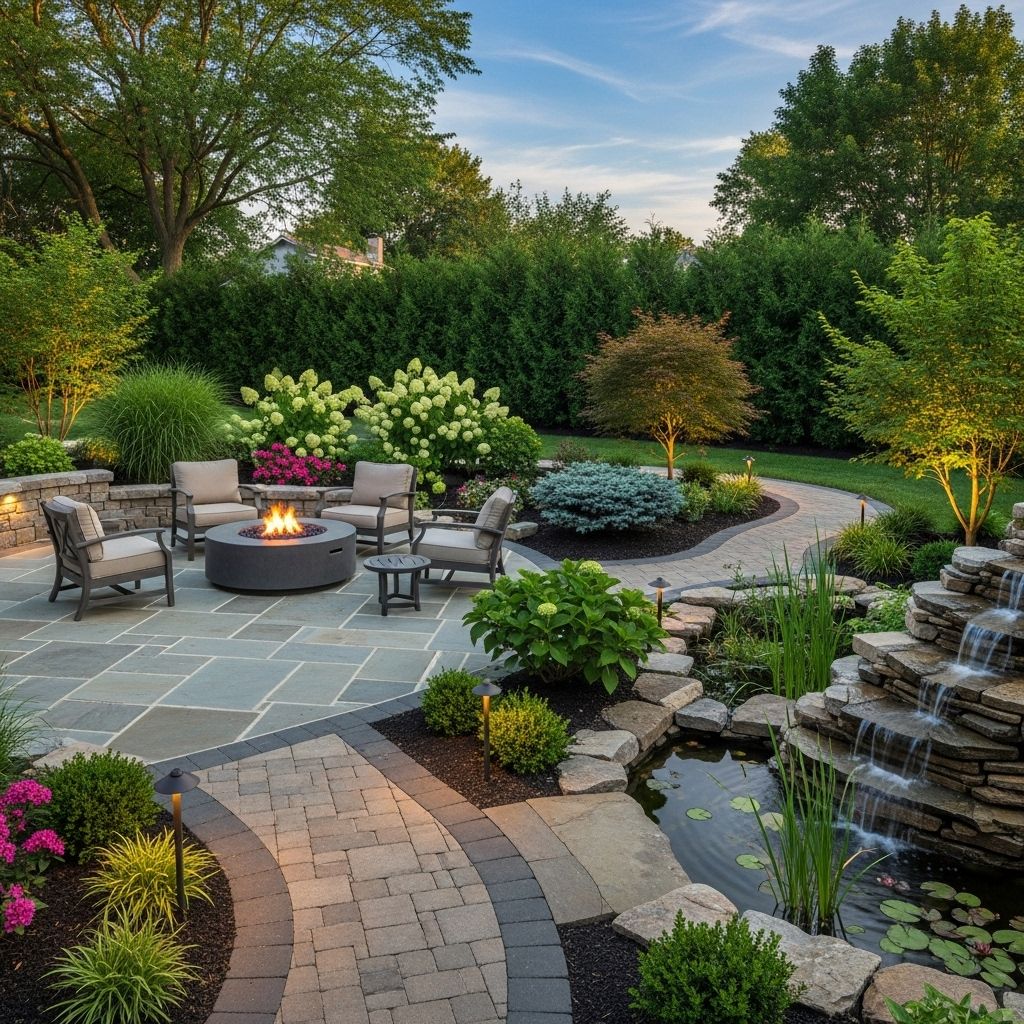
Image: HearthJunction Design Team
Creating Your Dream Outdoor Space: A Hardscape Design Guide
Designing an outdoor space that perfectly balances beauty, functionality, and durability requires thoughtful planning—especially when it comes to hardscape elements. Hardscaping forms the backbone of your garden’s architecture, providing structure and defining how you’ll use and move through your outdoor areas. Whether you’re starting from scratch or revitalizing an existing space, this comprehensive guide will walk you through the essential considerations for creating hardscape features that enhance your property and lifestyle.
Getting Started: Dreaming and Planning
The journey to a beautiful outdoor space begins with imagination. Before worrying about budget constraints or practical limitations, allow yourself to dream big. Create a comprehensive list of everything you might want in your landscape—from expansive decks and patios to swimming pools, outdoor kitchens, edible gardens, or cozy fire pits. This initial brainstorming phase helps you identify what truly matters in your outdoor living experience.
Once you have your wish list, spend time exploring design inspirations. Look through images of garden spaces that appeal to you, noting recurring themes in styles, colors, materials, and furniture arrangements that catch your eye. This exploration helps crystallize your personal aesthetic and functional priorities before you begin making concrete decisions.
Setting Priorities and Budgets
With your vision in place, it’s time to separate the must-haves from the nice-to-haves. Consider how you’ll actually use your outdoor space throughout different seasons and times of day. Which elements will provide the most value for your lifestyle? A family with young children might prioritize open play areas and safety features, while enthusiastic entertainers might focus on cooking and dining spaces.
Budget considerations inevitably shape your hardscape decisions. Some investments typically yield greater returns in both enjoyment and property value:
Worth the Splurge
- Professional master plan – A cohesive design that ensures all elements work together
- Quality masonry – Provides good structural bones that will last decades
- Premium materials – Weather-resistant options that maintain their appearance over time
- Privacy features – Screens, walls, or strategic plantings that create intimate spaces
- Expert craftsmanship – Especially for complex features like outdoor kitchens or water elements
Smart Ways to Save
- Gravel pathways – Less expensive than stone or concrete pavers but still attractive
- Repurposed materials – Existing bricks, stones, or wood that can be reused creatively
- Smaller plant specimens – Young plants cost less and will grow to fill spaces
- Mix-and-match furniture – Curated collections often have more character than matching sets
- Phased implementation – Building your hardscape elements over time as budget allows
Selecting Hardscape Materials
The materials you choose for your hardscape elements significantly impact both aesthetics and functionality. Different situations call for different materials, and understanding their characteristics helps you make informed decisions.
Paths and Walkways
Garden paths serve both practical and aesthetic purposes, guiding movement while enhancing visual appeal. Your choice of materials affects not just appearance but also maintenance requirements and how the path functions in wet weather.
| Material | Pros | Cons | Best Uses |
|---|---|---|---|
| Natural Stone | Timeless beauty, durability, increases property value | Expensive, installation requires expertise | Primary pathways, formal gardens, entryways |
| Concrete Pavers | Affordable, uniform, available in many styles | Less unique than natural materials | High-traffic areas, contemporary designs |
| Gravel | Inexpensive, good drainage, easy DIY installation | Requires regular maintenance, can scatter | Secondary paths, informal gardens, Mediterranean styles |
| Decomposed Granite | Natural appearance, stays in place, prevents mud | Can track into homes, requires edging | Naturalistic gardens, tree surrounds, driveways |
Patios and Terraces
As primary gathering spaces, patios should be constructed from materials that withstand heavy use while complementing your home’s architecture. The right patio surface creates a seamless indoor-outdoor transition and serves as a foundation for your outdoor living areas.
Bluestone has become a popular choice for patios due to its elegant appearance and durability. This dense stone offers a distinctive blue-gray color that weathers beautifully over time. For a cohesive look, consider using the same stone for both patios and adjacent pathways, which visually expands the space and creates a harmonious flow throughout your garden.
Limestone provides a timeless, universal appeal with its warm tones and smooth texture. Though more expensive than some alternatives, its classic beauty makes it appropriate for almost any architectural style. The natural variations in color and texture add character to outdoor living spaces.
Concrete pavers offer practical benefits including affordability, ease of installation, and virtually endless design possibilities. Available in various shapes, sizes, and colors, they can mimic the look of more expensive materials while providing excellent durability. For those seeking instant gratification with minimal hassle, concrete pavers represent an attractive option.
Designing Outdoor Rooms and Features
Effective hardscape design creates distinct “rooms” within your outdoor space, each with a clear purpose and character. Just as interior design considers flow between spaces, garden design should establish intuitive connections between different functional areas.
Entry Stairways and Approaches
Your home’s entrance creates crucial first impressions and sets expectations for what lies beyond. Front entry stairways should balance practicality with aesthetic appeal, providing safe passage while enhancing your home’s architectural style. Consider how materials, width, and configuration affect both visual impact and everyday usability.
Well-designed entry stairs incorporate proper lighting, appropriate handrails, and proportions that feel welcoming rather than imposing. The materials should complement your home’s exterior while providing enough contrast to clearly define steps for safety.
Outdoor Kitchens and Dining Areas
For those who love entertaining, outdoor cooking and dining spaces extend your home’s hospitality into the landscape. Thoughtful planning considers workflow, protection from elements, proximity to indoor kitchen facilities, and seating arrangements that encourage conversation.
Durable surfaces that resist staining and weather damage are essential for these high-use areas. Incorporating shade elements ensures comfort during daytime gatherings, while strategic lighting extends usability into evening hours.
Sustainable Hardscape Design
Modern landscape design increasingly emphasizes sustainability through thoughtful material selection and installation methods. Environmentally conscious hardscaping considers water management, heat reflection, and resource conservation.
Permeable surfaces allow rainwater to filter naturally into the soil rather than contributing to runoff and erosion. Options like decomposed granite create stable surfaces while maintaining good drainage characteristics. This versatile material works beautifully for paths, driveways, and tree surrounds, preventing mud formation while keeping a natural appearance.
Locally sourced materials reduce transportation impacts and often integrate more harmoniously with the surrounding landscape. Consider what stone and timber options are native to your region for the most sustainable and contextually appropriate selections.
Bringing It All Together: Cohesive Design
The most successful hardscape designs maintain visual harmony through consistent material palettes and thoughtful transitions. Small details often have outsized impact on the overall impression of your outdoor spaces. Ensure that all hardscape materials—stone, pavers, concrete, gravel, wood, paint, and hardware—work together cohesively while complementing your home’s architectural style.
Repetition of key elements creates rhythm and unity throughout your garden. This might mean using the same stone in different applications, carrying a color theme through various materials, or echoing architectural details from your home in garden structures.
Remember that hardscape features provide the framework for plantings. The best designs balance hard and soft elements, using structural materials to create backdrops, boundaries, and pathways that showcase and organize plant material.
Implementation: From Plan to Reality
With your design concept and material selections in place, the implementation phase brings your vision to life. Depending on the scope of your project and your personal skills, this may involve professional contractors, DIY efforts, or a combination of approaches.
For complex elements like retaining walls, extensive masonry, or features requiring plumbing or electrical work, professional expertise ensures safety and longevity. Simpler projects like gravel paths or basic patio installations might be suitable for dedicated homeowners with some landscape experience.
Regardless of who performs the work, proper site preparation remains crucial to hardscape success. Adequate drainage, stable base materials, and correct grading prevent future problems and extend the life of your hardscape investments.
Frequently Asked Questions
Q: How do I ensure my hardscape design complements my home’s architecture?
A: Look for materials and forms that echo elements already present in your home’s exterior. Consider the period and style of your architecture, using hardscape materials that were typical of that era. For contemporary homes, cleaner lines and more uniform materials often work well, while traditional homes may benefit from more textural variety and classic materials.
Q: What’s the best approach for a limited budget?
A: Focus first on creating good bones with the most impactful elements. A well-designed small patio of quality materials offers more value than a larger space made with inferior products. Consider phasing your project, implementing the most important features first and adding others as budget allows. Explore cost-effective materials like gravel or mixed-size concrete pavers that provide good value.
Q: How do I balance hardscape and plants in my garden design?
A: Aim for approximately 30-40% hardscape elements in most residential gardens. Too little hardscape leaves a garden lacking structure and function; too much creates a cold, institutional feeling. Use hardscape to establish the main functional areas and circulation patterns, then soften them with appropriate plantings. Consider how the spaces will look in different seasons as plants grow, bloom, and go dormant.
Q: What sustainable options should I consider for my hardscape?
A: Look for permeable surfaces like decomposed granite or permeable pavers that allow water infiltration. Incorporate reclaimed or locally sourced materials to reduce environmental impact. Design with proper drainage to prevent erosion and runoff. Consider the heat reflection properties of materials, especially in hot climates where dark surfaces can create uncomfortable microclimates.
Conclusion: Your Hardscape Journey
Creating thoughtful, functional, and beautiful hardscape elements transforms your outdoor space into an extension of your home. By investing time in planning and selecting appropriate materials, you establish the framework for a landscape that will provide enjoyment for years to come.
Remember that good design balances dreams with practicality. Your hardscape should reflect your personal style while addressing the realities of your site, climate, and lifestyle needs. Whether you’re creating intimate garden rooms, entertaining spaces, or practical pathways, well-executed hardscaping elevates the entire property.
The process may seem daunting at first, but taken step by step—from dreaming to planning to implementation—it becomes manageable. And the reward is an outdoor environment that enhances daily life, welcomes guests, and connects your home harmoniously to its surroundings.
References
- https://www.gardenista.com/garden-design-101/hardscape/
- https://www.gardenista.com/posts/hardscaping-101-design-guide-for-paths-and-pavers-prices-materials/
- https://www.gardenista.com/posts/hardscaping-101-design-guide-how-to-find-the-right-patio-pavers/
- https://www.gardenista.com/posts/hardscaping-101-exterior-front-entry-stairways-design-guide/
- https://www.gardenista.com/posts/hardscaping-101-guide-to-sustainable-landscape-design/
Read full bio of Anjali Sayee





